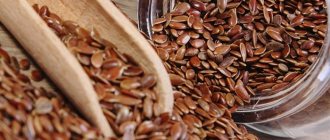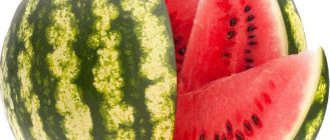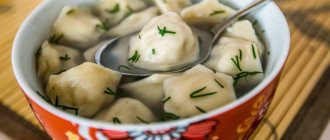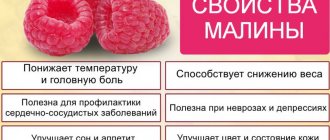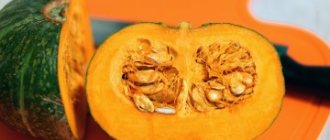Many restrictions are imposed on the nutrition of a nursing mother. With milk, the baby receives nutrients and beneficial microelements, but also harmful components of the mother’s diet. Unfortunately, the answer to the question: “Can a nursing mother have boiled sausage?” negative. This is primarily due to the fact that the production of sausages uses components that can cause unpleasant reactions on the part of the baby’s body.
The mother’s diet should consist of simple foods that are easy to digest, wholesome, healthy and fully replenish energy needs. Of course, you need to eat food rich in protein. These products maximally replenish the body's energy costs. These include poultry, lean red meats, and cottage cheese. Please note that when breastfeeding, a woman should monitor the baby’s condition and reactions to certain foods. Never add several new foods to your diet at once, otherwise you will not be able to track which specific product the reaction occurred to. Introduce any product gradually and be sure to monitor the child’s condition.
What kind of sausage can a nursing mother eat?
Breastfeeding specialists do not recommend consuming store-bought sausage while breastfeeding, in order to avoid allergic reactions to the additives that are included in the product. It is difficult to verify the quality of the meat that is used to make the product.
But if we are talking about a homemade delicacy made from high-quality ingredients, then it is allowed to introduce sausages into the diet of a nursing mother 3 months after the birth of the baby.
Sausage made from high-quality minced meat is easily absorbed by the body, improves the circulatory system, stabilizes blood pressure, and saturates with protein, which gives energy and great well-being.
Boiled sausage is indicated for consumption during breastfeeding, made in accordance with GOST requirements. The product must contain at least 30% meat, no more than 10% starch.
You should not overuse sausages and frankfurters, even despite their high quality. Such products contain a minimum of useful substances for the body of mother and child.
Sausage during breastfeeding: benefits and harms
If we talk about benefits, there is practically none in sausage. There are only a few advantages of this product for a nursing woman:
- There is no need to cook the sausages, as they are already ready to eat. Such food saves a lot of time, which can be devoted to the baby or relaxation from worries.
- These foods are quite filling due to their high fat content. After sausage sandwiches you don’t feel like eating for quite a long time.
- If the product is of high quality, with a high content of natural meat, then it contains a lot of protein. Protein is simply necessary for mother and baby, as it is the main building material in the body.
- The sausage tastes good. Don't write off the little joys of delicious food. Such things lift your spirits and help fight stress.
That's probably all. There is nothing more useful in sausage
But we can talk for a long time about the dangers of the product. The main negative qualities of sausages are as follows:
- Soy protein, which is included in most types of sausage, is a strong allergen for babies.
- A high content of chemical additives (flavors, preservatives, monosodium glutamate, etc.) often has a bad effect on the baby, causing intestinal upset and skin rashes. Such phenomena have a bad effect on the child’s appetite, he refuses to eat and does not gain weight well.
- Smoked sausage, among other things, contains a large amount of carcinogenic substances. They are a strong toxin that causes cancer. The sensitive body of a baby is not always able to neutralize toxic substances that enter the body. You need to remember this!
- There are practically no useful microelements in sausage, or their presence is so insignificant that it is not worth considering. If you replace healthy food with sausages, then very soon the body of a nursing woman will feel all the “delights” of vitamin deficiency.
- Sausages often contain a lot of salt and spices - this is bad for breastfeeding. Such ingredients can affect the taste of breast milk, changing it for the worse. This threatens that the baby may stop breastfeeding due to the unpleasant taste of food.
- A large amount of fat combined with starch, which is also often included in sausages, will invariably cause weight gain. Mothers who have gained weight during pregnancy should definitely avoid such foods.
- The animal meat from which sausages are produced is loaded with hormones. For a woman recovering from pregnancy and childbirth, such food is very harmful, as it interferes with the normalization of hormonal balance. Unbalanced hormonal levels have a bad effect on lactation.
Can nursing mothers eat sausage? It is possible, but very rarely and in strictly limited quantities! It is better to avoid smoked sausages altogether for the entire period of breastfeeding.
Is monosodium glutamate, which is added to boiled sausage, harmful?
The best composition of sausages for breastfeeding is meat, milk, egg, bacon, salt and dry herbs to add flavor. However, industrial sausage contains many harmful additives that disrupt the intestinal microflora of both mother and child.
Why is it worth giving up sausages during breastfeeding:
- The use of soy to reduce the cost of the product - this component retains fluid in the body, leads to flatulence, and complicates the process of food processing.
- Monosodium glutamate – gives the product a bright color, prevents the development of pathogenic bacteria in the product. Regular consumption of sausages containing sodium nitrate and carcinogens increases the risk of developing cancer.
- Sugar and empty carbohydrates lead to excess weight gain, worsen metabolic processes in the body, cause the accumulation of subcutaneous fat, and increase harmful cholesterol in the blood.
- Flavor enhancers are components that help reduce the process of saturation of the body, and therefore the rate of consumption of the product increases. The result is excess weight, cholesterol, deterioration of blood flow, and problems with the digestive system.
- Trans fats are an artificial component that is released during the processing of vegetable oil, has a harmful effect on the heart, blood vessels, and impairs the functioning of the intestines, liver and kidneys.
Powdered milk, large quantities of starch, flour, and semolina are added to a low-quality product. When eating such products during breastfeeding, the risk of getting diarrhea, allergic rashes on the body, colic, swelling, metabolic disorders, and bloating in the mother and child increases.
Recommendations for use during lactation
To ensure that the product does not harm the child’s gastrointestinal tract, the following rules must be followed:
- sausages can only be eaten boiled;
- cook the product for at least 3 minutes, removing the shell;
- It is forbidden to eat fried sausages.
It is better to consume this product in the morning so that you can react in a timely manner.
How to properly introduce it into the diet?
Like any new product, sausages during lactation should be introduced gradually into the diet of a nursing mother. Having chosen a high-quality product and made sure that the rules for its storage are followed, you can eat no more than 50 grams at the first dose. This is necessary to control the baby’s reaction. If an allergic rash does not appear, colic and other disorders are absent, sausages can be consumed occasionally.
Daily and weekly norm
The daily consumption rate is no more than 200 grams of the product. It should be borne in mind that eating sausages every day is harmful and even dangerous. They can be eaten only in cases of extreme necessity, for example, if a woman does not have time to prepare herself a full lunch or breakfast, then a one-time dose will not cause harm.
With regular consumption of the product as food, the risk of adverse reactions in the baby from the gastrointestinal tract increases, therefore a nursing mother should remember the intake rates and basic rules for consuming sausages. Ideally, semi-finished products should not be in the diet of a nursing mother; it is better to replace them with dishes made from natural meat, but sometimes it is permissible to deviate from this rule.
What sausage should a nursing mother not eat?
During breastfeeding, it is prohibited to introduce smoked, raw smoked, dry-cured, boiled-smoked sausage into the diet. Such products are saturated with spices, various additives, dyes, and flavor enhancers.
During the process of preparing raw smoked sausage, the product cannot be processed at high temperatures, and therefore may contain pathogenic bacteria and infections that can enter the body of the mother and child.
Blood sausage is popular. When preparing it at home, you can allow a nursing mother a few pieces a week, but you should refuse the industrial version due to the short shelf life and the possibility of purchasing stitched products.
During breastfeeding, liver sausage is indicated for consumption in limited quantities six months after the birth of the baby. It is advisable to choose home-made products, not exceeding the permissible limit per week - 150 g.
How to cook sausages if you are breastfeeding a newborn
During lactation, a young mother is allowed only boiled sausages, even if they are already initially declared as such. Under no circumstances should you try a raw product that has not previously undergone heat treatment. Especially if your baby is not yet two months old.
Therefore, do not forget to thoroughly simmer the delicacy in boiling water before you start eating - at least two to three minutes. And remember that it is important to remove polyethylene from sausages that have an unnatural wrapper before cooking - when heated, it releases substances harmful to health. But the product in the “intestinal casing” can be cooked directly in it without removing the film.
While you are breastfeeding your newborn, it is better not to fry sausages, especially in an abundance of vegetable oil.
Even the most dietary delicacy prepared in this way will become of little benefit to the body. In addition, fried sausages have a much more impressive energy value.
How much and how often can you eat sausages during lactation?
It is allowed to introduce boiled sausage into the diet after 3 months after the birth of the child. Use the product in the first half of the day, but not on an empty stomach. Daily dose – no more than 30 g.
In the future, it is allowed to increase the dose to 50 g, while eating no more than 150 g of sausages per week. It is best to boil the product, add it to an omelette, or steam it as a casserole with vegetables, but eating it as an independent component is not recommended.
You cannot eat sausage every day; an acceptable option is 2-3 times a week. Each time it is best to take a fresh slice of the delicacy, and not buy for future use, because products made from high-quality ingredients cannot be stored for a long time.
You need to store the sausage in the refrigerator in cling paper or a plastic container. It is not recommended to use polyethylene for this. Freezing the product is prohibited!
Recipes
The actual composition of the products is not always indicated on the packaging, so it is better to buy homemade sausages that do not contain dyes or preservatives. You can make your own sausage at home. It will be a natural, tasty and healthy product.
Chicken sausages
Required ingredients: chicken meat - 0.5 kg, milk - 200 ml, hot or sweet paprika - ¼ and ¾ respectively, mustard - 1.5 tsp, intestines or cling film.
- Cut the chicken fillet into small cubes, add milk and leave in the refrigerator for 1.5 hours.
- Add the remaining ingredients and mince.
- Beat the mixture in a blender until it becomes homogeneous, but not to the consistency of a pate.
- Grind the resulting minced meat through a sieve.
- The mixture can be placed in intestines or in cling film. To do this, cut a film 20x20 cm, lay out the minced meat and wrap it, tie it on both sides.
- Cool the sausages in the refrigerator for 2-3 hours, and then cook by boiling for 5-10 minutes.
Pork and beef sausages
For this you will need: minced pork – 2.5 kg, minced beef – 0.5 kg, ice water – 300 ml, salt – 65 g, ground pepper – 6 g, sugar – 10 g.
- It is better to prepare sausages from homemade minced meat, first passing the meat through a meat grinder.
- Using a blender, grind the beef, add a little water and salt, add pork and other ingredients. Beat everything until smooth.
- Place the mixture in film and tie the ends with rope.
- Immerse the sausages in water at a temperature of 40 degrees for 15 minutes, then cook for 40 minutes.
Eating homemade sausages is a pleasure. Store finished products in the freezer for no more than two months, as the meat will age and its taste will deteriorate. Preparing homemade sausages takes about two hours.
Breastfeeding mothers can eat sausage and frankfurters if the baby does not have a rash or tummy problems. Gradually increase the portion, but do not overdo it.
How to choose boiled sausage and sausages
When choosing sausages for a nursing mother, it is important to pay attention to the following characteristics:
- inspect the appearance of the product - the packaging must be of high quality, without damage, the sausage is pink in color, without impurities and additional ingredients (vegetables, spices, herbs);
- familiarize yourself with the production date, shelf life of the product and sales period;
- carefully read the label - whether the production conditions of the product are met according to GOST, whether the type of meat and its grade are indicated, or whether the product contains minced meat from offal;
- you need to choose sausages of the highest and first grade; such delicacies contain more meat than other varieties;
- if possible, look at the cut of the sausage; it should be smooth, velvety, uniform in texture and color, without tendons, cartilage, or blistering.
You should not buy sausage if its protein content is less than 10%, as well as products manufactured according to specifications. It is important to purchase products from trusted brands; you should not experiment by buying something new and enticing (advertising, beautiful packaging) to try.
Composition of sausages
For example, let's look at the composition of the well-known doctor's sausage and see what a piece of this delicacy contains. According to the state standard, all doctor's sausage must consist of pork and beef, approximately in proportions of 70:25 kg. Plus, it’s milk, eggs and completely harmless spices that can’t harm either mother or baby. Although added dairy products should be treated with caution, as they can cause allergies.
Modern society offers a large selection of sausages. In stores, you can find a large number of varieties of doctor's sausage, but each manufacturer will have its own composition, which is radically different from GOST. For example, production according to technical standards will consist of poultry meat and processed less valuable parts of it, with the addition of soy protein and other impurities to enhance the taste. The composition of this product will include only 10% pure meat, and the manufacturer does not always specify whether it is pork or beef.
It is prepared in a boiled way, so after cooking it, if a person eats a piece, he will not be able to feel the absence of natural meat. In principle, most sausages are prepared using these technologies.
On the one hand, chicken meat is also meat, and it should not harm the baby, but additional flavor enhancers can cause severe food allergies.
This is especially true for raw smoked sausages, with a lot of spices and dyes. Raw smoked products are less healthy than boiled ones. If a young mother decides to eat sausage during lactation, she should know a few rules. By adhering to them, you can avoid a lot of problems.

